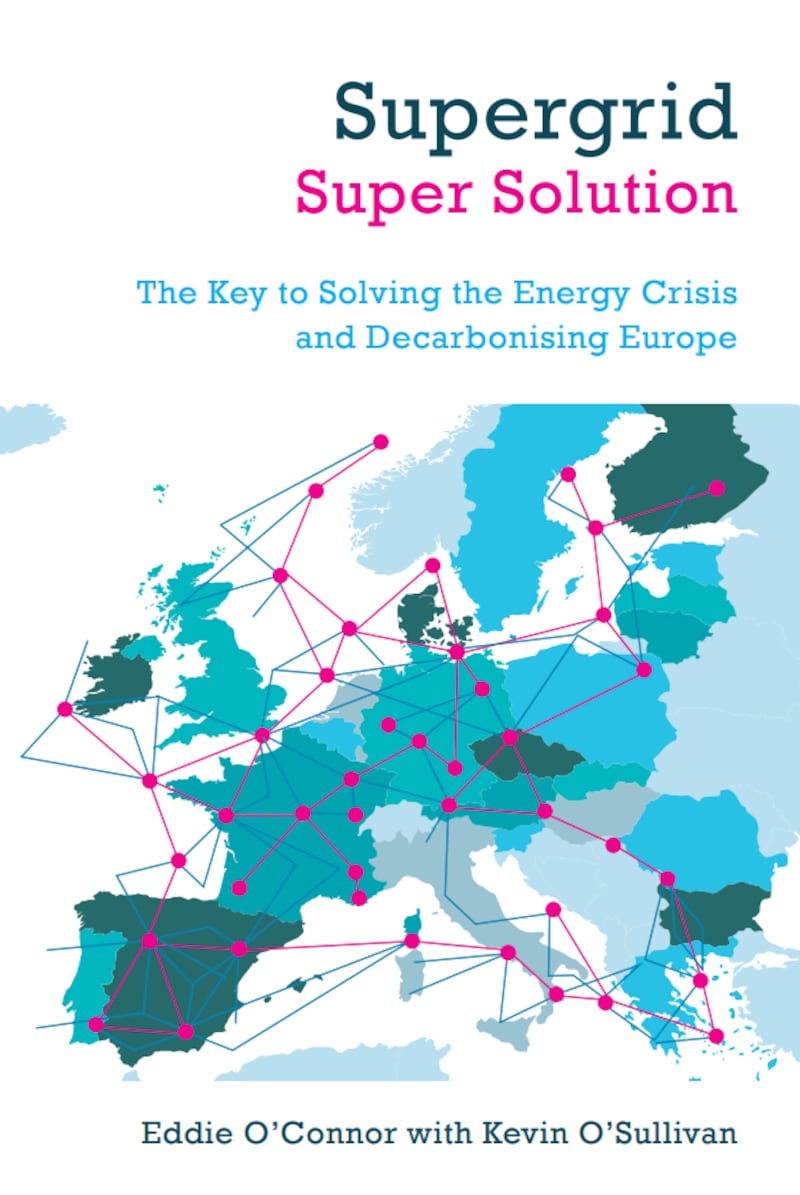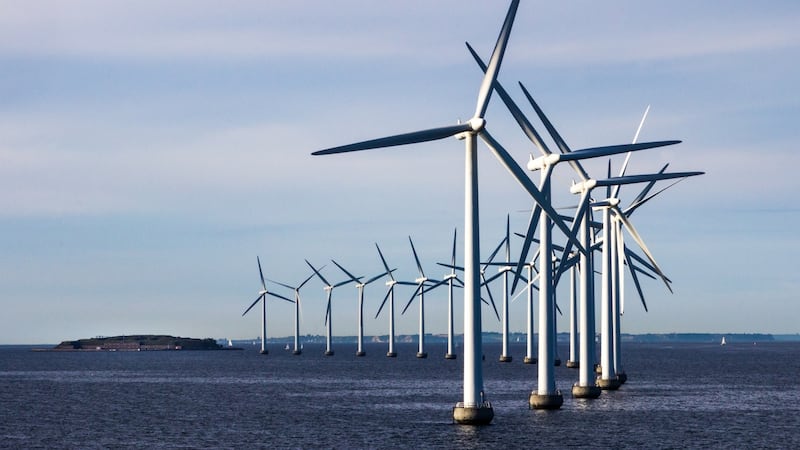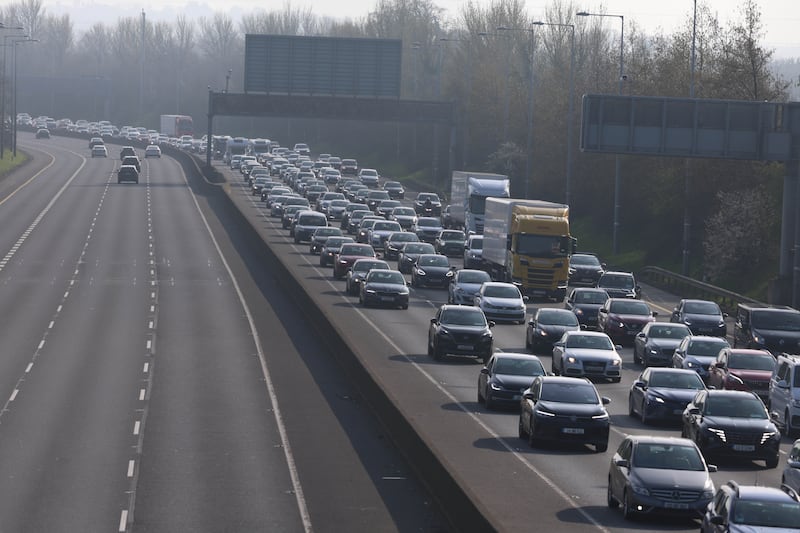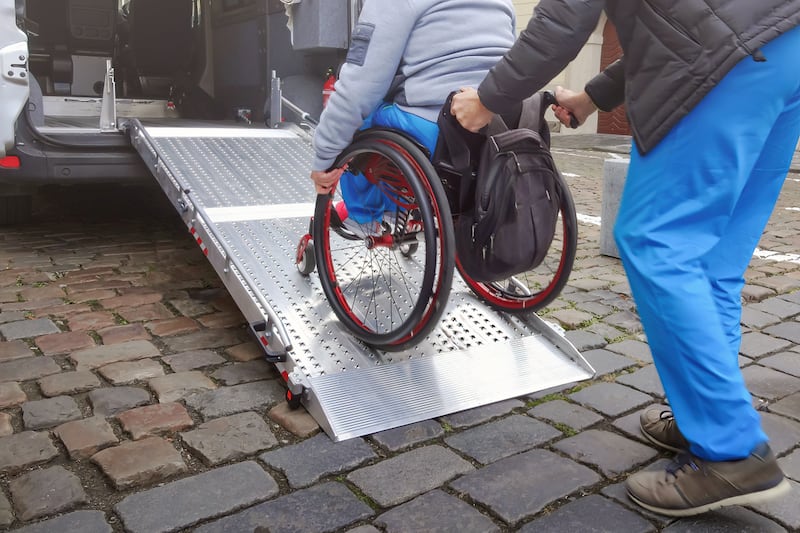Energy history has to be rewritten if we are to leave a planet suitable for habitation by future generations. It requires moving from fossil fuel-produced energy to non-fossil sources which predominantly mean wind and solar.
Fossil-fuel burning has to cease because of the environmental imperative. It is the single biggest source of global warming.
Electrification with renewable energy sources provides carbon-free power, but it is ironic that the fastest moving product in the world – electricity – is the one that does not move freely from country to country in the EU by way of a supergrid.
The “super” refers to the grid being European as distinct from national in character. Up to now grids were thought of as national constructs. There was no need for planners to think beyond their own borders because fossil fuels could be transported and burned within national boundaries.
READ MORE
The supergrid we envisage works in harmony with national grids already in place by using a new cable transmission system based on superconductivity, a phenomenon whereby certain materials lose all their electrical resistance below a critical temperature. These superconducting materials are built from rare earth metals such as yttrium and gadolinium that are abundant compared to lithium.

The quantity of material used in superconducting wires is tiny compared to traditional copper conductors. One tonne of Yttrium-based compound conducts the same rate of electricity as 30,000 tonnes of copper.
Because superconductors have zero resistance, they do not have to operate at high voltages. Copper always has resistance losses associated with it, so cables or wires made from it have as high a voltage as possible.
[ Government urged to reconsider Ireland’s nuclear power banOpens in new window ]
Superconducting cables already work in Germany, the US and South Korea over distances up to 5km. There is a need to design, prototype and manufacture cables capable of conducting electricity over a distance of hundreds of kilometres while keeping them cool.
Electrification
The climate crisis and interlinked nature crisis cannot be solved by electrification alone. Too much damage has been done already and, with hundreds of years needed to get rid of CO² already in the atmosphere, heating impacts will continue.
But electrifying everything can quickly become the great workhorse of decarbonisation. It can be the main driver in ending reliance on fossil fuels and achieving carbon neutrality by mid-century – while helping to solve the energy crisis by ending dependence on oil and gas, especially supplies sourced from unreliable despotic rulers.
The real question facing proponents of hydrogen is cost. There is a major loss of energy when electricity is converted into hydrogen
A meshed supergrid is comprised of a series of nodal points linked by superconducting cables. These nodal points are called supernodes. It is designed in such a way that should there be any failure of an individual leg, an alternative pathway exists to move the electricity to its destination.
Many European countries have insufficient renewable resources to decarbonise their economies. Others, such as Ireland, have huge potential surpluses from offshore wind resources. There is currently no way of getting wind – and solar – renewably generated electricity from remote areas at the edge of the Continent to those countries eager to decarbonise but without the means to do so.

Grid operators are by their nature conservative because their main task as transmission system operators (TSOs) is to ensure electricity supplies are maintained at any price in a narrow national context.
We are at the beginning of a new age with ability to use the vast amount of grid supply using wind and solar allied to the fact these sources are cheaper than fossil fuels, and can get cheaper. The missing element is a supergrid capable of extending across a continent using proven technology to minimise losses as power is transmitted at unprecedented speed over vast distances to where demand is concentrated.
Hydrogen distraction
While the rest of the world locked itself down inside a Covid shroud, gas companies were busy attempting to rewrite European energy policy. They succeeded in inserting hydrogen into many future energy scenarios. These were supposed to be clean, green and superior to the obvious scenario in which electricity generated by renewables predominated.
They actually stand in a category all on their own where “hype” is king, while the economics of making and distributing hydrogen were not mentioned. A Bloomberg article in 2020 noted: “The late Frank Zappa once said that stupidity, rather than hydrogen, was the most common element on the planet. What he did not tell us is that the two combine to create the alloy Hopeium, which has an extraordinary ability to absorb public and private money.” Hopeium is alive and thriving in Europe and in the UK.
[ Offshore renewables supergrid needed to help EU reduce its emissionsOpens in new window ]
A staggering €550 billion was allocated in the EU energy planning strategy for manufacture and distribution of green hydrogen (produced using renewable electricity). It was reasoned that a way to cope with the intermittency and variability of renewables would be to make hydrogen from water when there was a surplus of green electricity.
The real question facing proponents of hydrogen is cost. There is a major loss of energy when electricity is converted into hydrogen. This suggests hydrogen production will happen where the cheapest green electricity is available. This will not be in Northern Europe. It will be in desert areas where there is intense radiation from the sun. Resultant hydrogen will be transported as ammonia. On the basis of cost, electricity will power every other energy-needing process.
For most transport and heating needs, electricity is the cheaper solution. Hydrogen will always suffer from inherent inefficiency compared to electricity, as some 35 per cent of the energy in electricity is lost in the manufacture of green hydrogen. It will fulfil the role of a vital niche element in the drive to decarbonise the entire human ecosystem, but beware the distractions of those who profit by the old order.
Global picture
UN secretary general Antonio Guterres has called for “a coalition of the world” to tackle climate challenges ahead. This should also apply to recasting the climate COP process – the only mechanism for global action – rather than scuttling it and attempting to build a different multilateral model from scratch.
It has to be reinforced by greater robustness and transparency – and infused with elevated ambition. Reform must mean better delivery of climate action by wealthy countries, while ensuring those most exposed to an overheating world are made resilient and adequately compensated for the sins of historical and ongoing emissions arising from the developed world.
The supergrid, when built out and large enough, will allow Europe to capture a profound remote sustainable energy source and deliver it to the customer
What Guterres refers to as “the battle of our lives” requires a separate international alliance operating closely in tandem with an effective COP platform; applying big ideas, new thinking and disruptive approaches to decarbonising the world through electrification without borders.
The collective response must come from the most powerful governments helping the poorest countries; big corporations, small businesses, local communities and individuals. “This is not someone else’s problem. It is ours. We are not bystanders. Each in our own way is an actor in this great human and planetary drama,” former European Parliament president Pat Cox noted at the Dublin Climate Dialogues in 2021.
By collectively harnessing innovative technologies this can happen and, in the context of Europe, a supergrid can be the great facilitator. We have costed it at €990 billion with a payback period of 7.8 years.
[ The Climate Crisis: an essential guideOpens in new window ]
Pursuing this path needs great courage and leadership from politicians. It requires relentless commitment from energy companies (both state and private); green investors, scientists and engineers. It is a task beyond one country; beyond one company. It requires collective action in the best interests of all and the natural environment where we have our being.
The supergrid, when built out and large enough, will allow Europe to capture a profound remote sustainable energy source and deliver it to the customer.

Climate politics is here to stay
It will capture wind energy over a large area, turning locally variable wind speed (and hence generation) into almost firm power even during the duration of an Atlantic storm tracking towards mainland Europe. By linking wind from the North with solar from the South, it smooths out the variability of both year-round. And it also reduces investment needed in battery storage.
If in pursuing this course Europe becomes the first mover in establishing a supergrid, the US and China will inevitably follow suit. But ambition needs to be scaled up beyond the current aspirations of the European Green Deal that have been bolstered by REPowerEU, the move to generate affordable, secure and sustainable energy for Europe in the wake of the Ukraine war.
Western opportunity
If ever there was a region that for centuries never benefited from trickle-down economics, it is the west of Ireland. Offshore wind maximised by an overlaid supergrid represents the antithesis of the economic stagnation it has suffered over centuries.
Moreover, the transition now possible along the western seaboard, enabled by floating wind farms, can be replicated elsewhere in Europe in the form of a great rebalancing of regional development.
The European issue
Despite a golden period of growth for renewable power in Europe, electricity’s share of overall EU gross final energy consumption has remained unchanged at 24 per cent for the past 15 years. It needs to more than double to reach the Green Deal decarbonisation objectives. Moreover, large amounts of electricity will be needed to produce hydrogen and hydrogen-derived fuels in hard-to-abate sectors such as aviation, shipping, and industrial processes, where direct electrification is unpractical or impossible.
Europe has all the prerequisites to make the necessary transition happen. We have access to affordable renewable electricity generation in abundance in the form of solar power, onshore and offshore wind – and we can process data at unprecedented speed. But we need infrastructure. The renewable electrons need to move freely across borders for all Europeans to benefit.
In any other sphere of human endeavour, the killing of millions would be called out for what it is: a war crime on current humanity and on future generations
The majority of power-generating capacity needed will come in the form of offshore renewables for which no grid infrastructure currently exists. Whether Europe manages to build out its electricity infrastructure in time will be the main determinant of its ability to decarbonise its economies.
Two distinct characteristics of renewable energy require wide-area power exchange. First, most high-quality wind and solar resources in Europe are located far away from population centres. Second, fluctuations in output from individual plants can provide electricity service when it is needed, but only aggregated across areas with different wind regimes, local weather and load patterns.
If we get it right, the environmental benefits will be vast. Europe will finally gain energy independence, while reaping the commercial benefits of exporting those solutions to the rest of the world. Checkmate Russia and the Middle East.
[ Ireland ‘could supply 5% of Europe’s electricity’ with offshore windOpens in new window ]
Pan-European grid planning should not be undertaken by entities with a largely national focus. It will not make us energy independent. It will be costly, environmentally damaging and maintain our energy dependence on foreign supplies.
While two EU institutions – the European Parliament and Commission – seem ready to prepare for a European offshore renewable energy Supergrid, Europe is in desperate need of committed sponsors among European leaders in the Council for a supergrid and a new governance framework to make it a reality.
It must be a central goal, even when the road ahead seems hopelessly blocked. That is what the great architect of postwar Europe Jean Monnet would have done. We can create a green community of interdependent states.
Policy decisions at national and EU levels are needed. Every minute of delay is costing lives, pushing nature further into irreversible decline with wholesale loss of living things, and recklessly driving our world to catastrophic climate breakdown.
Call to arms
We are at virtual war with providers of the current solution – the oil and gas sector – whose products are the single biggest contributor to an overheating planet. It is not a war fought in the trenches with tanks, drones or fighter jets. Nevertheless, it has a more devastating result than a war fought with nuclear weapons. The burning of fossil fuels such as coal and oil was responsible for 8.7 million deaths globally in 2018.
In any other sphere of human endeavour, the killing of millions would be called out for what it is: a war crime on current humanity and on future generations. Those who persist with it will be denounced by future generations who will have to live with the almost unbearable consequences of current greed.
Every minute of delay is costing lives, pushing nature further into irreversible decline with wholesale loss of living things
That war being waged on us will be denied strenuously by oil companies. We are being told by them and their agents it is being done to fuel human needs, that there are no alternatives to using fossils for energy. Or if alternatives exist, they are so flawed that they cannot become the dominant way we humans generate and consume energy. They have preyed upon the ignorant and the malevolent and enlisted them in their ongoing struggle to enrich themselves.
Oil and gas companies use brains, money and the inherent conservatism of our human tribe to continue their war. They have to be fought with even more enthusiasm, a higher sense of purpose than making money for a few, and imagination in the best interests of all global citizens.
What is to be done? We begin by recognising the raw materials; the tools, the human resources and the cash already exist to win that war. We have enough wind, solar, hydro, biomass and some nuclear to allow for complete decarbonisation of electricity, road transport, heating and cooling, steel making, chemical feedstocks, aviation and shipping.
We must enlist the spirit of young people and empower them to demand action from our political leaders. That has every chance of tipping the balance in favour of rapid transformation to an electrified world driven by renewables.
Every minute of delay is costing lives, pushing nature further into irreversible decline with wholesale loss of living things, and recklessly driving our world to catastrophic climate breakdown.
The missing link is the inter-European logistic arrangement which will allow major energy hotspots to be connected rapidly to major population centres. We call this the supergrid. Without it, decarbonisation will not happen.
Supergrid Super Solution – The Key to Solving the Energy Crisis and Decarbonising Europe by Eddie O’Connor with Kevin O’Sullivan is published by Orpen Press on February 23rd. Eddie O’Connor is a renewable energy developer and chairman of SuperNode. Kevin O’Sullivan is Environment and Science Editor with The Irish Times

















